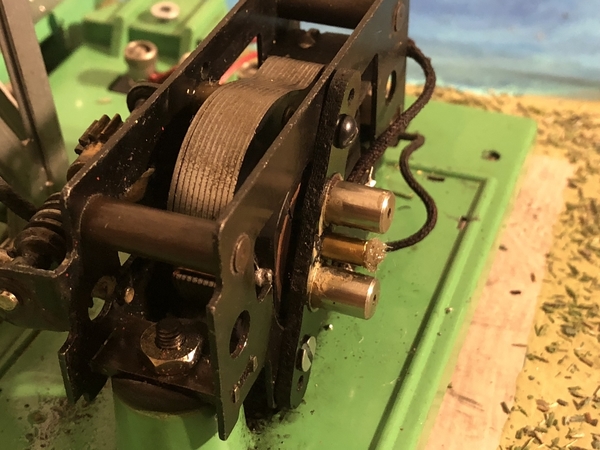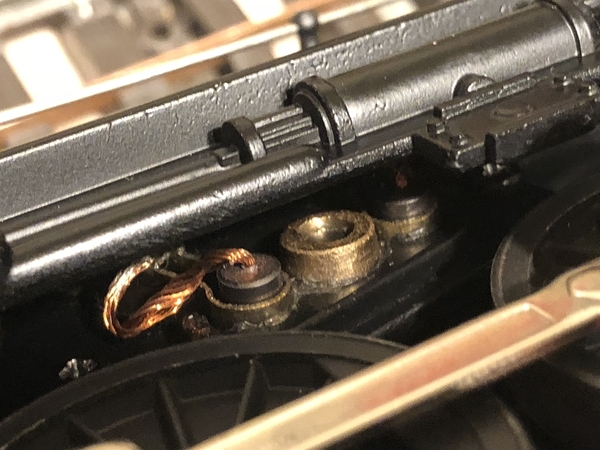GregR posted:313 Bascule bridge with brass tube and oil wick.RC car roller bearing installed in 200 series postwar alco. Very smooth operationThis bearing came from a Rhoomba robotic vacuum. When I periodically replace the spinning brushes, I save the bearings. Many end up in trains to serve a second life after being drilled to the correct diameter.
Greg, not sure why I never responded to your last post - very ingenious! And innovative!
I just finished my first Oilite bushing installation.
Back side
Front (Top) side
Since I don't own a drill press, I had to carefully enlarge the armature hole to 3/16" using a handheld drill - very unnerving, but it seemed to work OK. I lightly coated the interior of the new hole with epoxy then pushed the bushing in flush with the backside in order to shove any excess epoxy out the front. I then added just a little more epoxy around the front of the bushing - there is just a slight lip that extends above the brush plate surface. You can see how close the bushing is to the solder lugs. I believe the solder lugs could be trimmed a bit if absolutely needed, using a Dremel diamond blade. Immediately after installing the bushing, I assembled the brush plate without brushes, screwed everything down, and checked for armature tightness. I felt what I thought was a tiny bit of drag, so I grasped the end of the armature shaft with my needle nose pliers and applied side to side pressure in all directions to align everything - the armature now spins quite freely. So I let the glue set up then reinstalled the brushes & springs and it works like a charm. The results are really satisfying! Reduction of noise, higher rpm, and certainly less frequent need to oil. Using just the brush plate, I find myself oiling the armature hole every other time I try to run the engine
With regard to your method where you flare the (inside) end of your brass bushing, I'm thinking that might not work with an Oilite bushing, so I'm not going to press my luck on this one. ![]()
On this old style bearing plate from a prewar whistle (2689W), Lionel used an oil wick retainer, which reduces the frequency of need for lube. But most motors I repair don't have this wick retainer which is why I want to adopt your oil wick method.
I obtained the bushing from McMaster-Carr, and it measures as you have noted, they are 1/8"ID, and 3/16"OD, and only 1/8"L - I will get some longer ones next time to try your very ingenious oil wick. So where did you get the wick material? I see Jeff Kane has wicks, just wondering if Joanne's Fabrics or Michael's might have some locally?
I am also very interested in the RC car roller bearing installation you did, I wonder if you might provide some detail on how that was done? And did you think it was worth the effort?
George







